
Trastevere: Rome's Bohemian Heart
Discover Trastevere in Rome: A blend of historic charm and vibrant modernity, perfect for those seeking authentic Roman culture and lively nightlife.
Nestled on the western bank of the Tiber River, Trastevere is a charming neighborhood that captures the true spirit of Rome. With its narrow, cobblestone streets, ivy-clad buildings, and vibrant atmosphere, Trastevere offers a glimpse into a Rome that feels both timeless and contemporary. This area is a delightful blend of old-world charm and modern-day vibrancy, making it a must-visit for any tourist seeking to experience the authentic Roman lifestyle. Wander through the labyrinthine alleyways and discover hidden gems such as centuries-old churches, quaint piazzas, and bustling markets. The Basilica di Santa Maria in Trastevere, one of Rome’s oldest churches, is a masterpiece of medieval art and architecture that should not be missed. As you explore, you'll find an abundance of trattorias, gelaterias, and cafes where you can savor traditional Roman cuisine and local wines. At night, Trastevere transforms into one of Rome’s liveliest districts. The streets come alive with the sounds of street musicians, the laughter of locals and tourists alike, and the aromas of delicious food wafting from the numerous eateries. Whether you’re looking to enjoy a quiet meal or join in the festive nightlife, Trastevere offers something for everyone. It's a neighborhood where history, culture, and contemporary life blend seamlessly, providing an unforgettable experience for any visitor.
Local tips in Trastevere
- Visit the Basilica di Santa Maria in Trastevere early in the morning to avoid crowds.
- Try the local dish, Cacio e Pepe, at one of the neighborhood trattorias.
- Explore the side streets and alleys for unique shops and artisan boutiques.
- Enjoy a gelato by the Piazza di Santa Maria in Trastevere while people-watching.
- At night, head to Piazza Trilussa for a lively atmosphere and street performances.
Trastevere: Rome's Bohemian Heart
Nestled on the western bank of the Tiber River, Trastevere is a charming neighborhood that captures the true spirit of Rome. With its narrow, cobblestone streets, ivy-clad buildings, and vibrant atmosphere, Trastevere offers a glimpse into a Rome that feels both timeless and contemporary. This area is a delightful blend of old-world charm and modern-day vibrancy, making it a must-visit for any tourist seeking to experience the authentic Roman lifestyle. Wander through the labyrinthine alleyways and discover hidden gems such as centuries-old churches, quaint piazzas, and bustling markets. The Basilica di Santa Maria in Trastevere, one of Rome’s oldest churches, is a masterpiece of medieval art and architecture that should not be missed. As you explore, you'll find an abundance of trattorias, gelaterias, and cafes where you can savor traditional Roman cuisine and local wines. At night, Trastevere transforms into one of Rome’s liveliest districts. The streets come alive with the sounds of street musicians, the laughter of locals and tourists alike, and the aromas of delicious food wafting from the numerous eateries. Whether you’re looking to enjoy a quiet meal or join in the festive nightlife, Trastevere offers something for everyone. It's a neighborhood where history, culture, and contemporary life blend seamlessly, providing an unforgettable experience for any visitor.
Iconic landmarks you can’t miss
Janiculum Hill
Experience the majestic views and rich history of Janiculum Hill, a scenic gem in the heart of Rome.

Basilica of Santa Maria in Trastevere
Discover the Basilica of Santa Maria in Trastevere, a historic Roman church adorned with stunning mosaics and a peaceful atmosphere in the heart of Trastevere.

Basilica of Saint Cecilia in Trastevere
Explore the Basilica of Saint Cecilia in Trastevere, a stunning blend of art, history, and spirituality in the heart of Rome's charming neighborhood.

Fontana di Santa Maria in Trastevere
Discover the timeless charm of Fontana di Santa Maria in Trastevere, a stunning fountain that embodies the heart of Roman culture and beauty.

Faro di Roma
Experience the breathtaking views and rich history at Faro di Roma, a stunning monument perched atop Gianicolo Hill in the heart of Rome.

Giuseppe Garibaldi Monument
Explore the Giuseppe Garibaldi Monument in Rome, a stunning tribute to Italian unity with breathtaking views and rich historical significance.
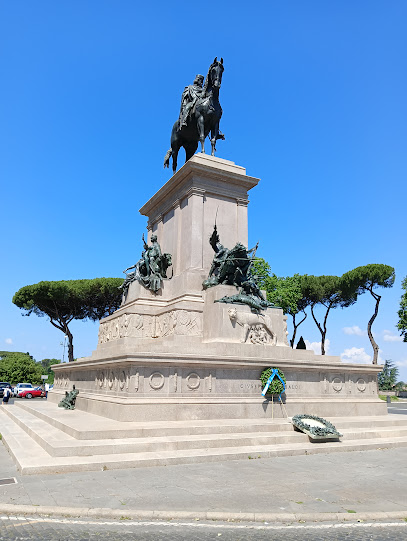
Fontana del Prigione in Trastevere
Discover the enchanting Fontana del Prigione in Trastevere, a medieval fountain that reflects Rome's rich history and artistic beauty.
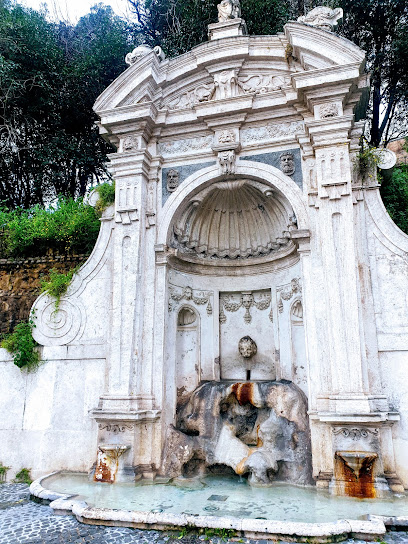
Monumento a Trilussa
Discover the Monumento a Trilussa in Rome: a poetic tribute to the beloved poet Carlo Alberto Salustri in the vibrant Piazza Trilussa, rich with culture and history.

Fontana di via di Porta di San Pancrazio
Discover the charm and utility of the Fontana di Porta di San Pancrazio, a picturesque drinking fountain in the heart of Rome that enhances your travel experience.

War Monument
Explore the War Monument in Rome: A poignant historical landmark honoring the courage of soldiers, set in a breathtaking architectural landscape.

Unmissable attractions to see
Janiculum Hill
Discover Janiculum Hill, a scenic and historical haven in Rome offering breathtaking views, lush gardens, and rich cultural experiences.
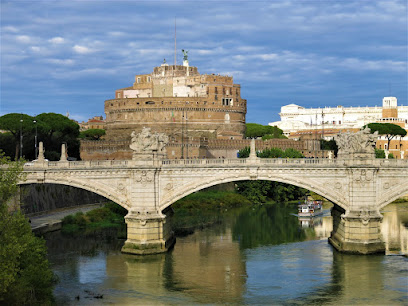
Basilica of Santa Maria in Trastevere
Experience the rich history and stunning mosaics of the Basilica of Santa Maria in Trastevere, a must-visit highlight in Rome.

Fontana dell'Acqua Paola
Experience the breathtaking beauty of Fontana dell'Acqua Paola, an iconic fountain offering stunning views of Rome's skyline and rich history.

Botanical Garden of Rome
Explore the enchanting Botanical Garden of Rome, a lush haven filled with diverse plant species and serene landscapes in the heart of the city.

Basilica of Saint Cecilia in Trastevere
Explore the Basilica of Saint Cecilia in Trastevere, a serene refuge of Romanesque beauty, rich history, and enchanting mosaics in the heart of Rome.

Villa Farnesina
Discover the artistic splendor of Villa Farnesina in Rome, a Renaissance villa adorned with exquisite frescoes and beautiful gardens.

Museo di Roma in Trastevere
Experience the heart of Rome's history at Museo di Roma in Trastevere, where art and culture converge in a picturesque setting.
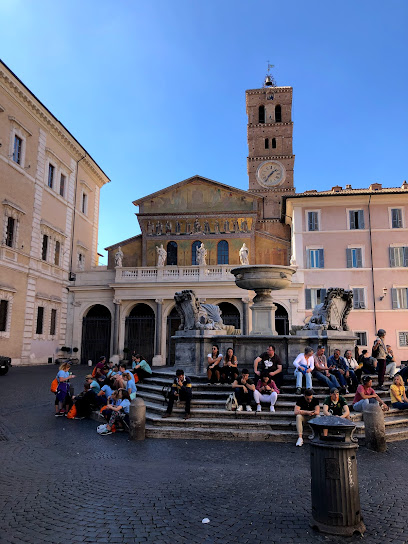
Fontana di Santa Maria in Trastevere
Experience the timeless beauty of the Fontana di Santa Maria in Trastevere, a baroque masterpiece nestled in the vibrant heart of Rome's historic district.

Fontana dei Tritoni
Discover the stunning Fontana dei Tritoni in Rome's Botanical Garden, a captivating blend of art, history, and nature waiting to be explored.

Three Women Paste, by Cara Carmina
Explore the vibrant artistic expression of 'Three Women Paste' by Cara Carmina in the heart of Rome, where creativity meets cultural narratives.
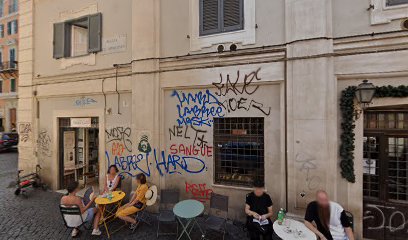
Essential places to dine
Tonnarello
Discover authentic Italian flavors at Tonnarello in Rome – where tradition meets taste in every delightful dish.

Nannarella
Experience authentic Roman cuisine at Nannarella in Trastevere - where tradition meets flavor in every dish.

Otello
Experience the rich flavors of Italy at Otello, where authentic cuisine meets warm hospitality in the heart of Trastevere.

Ristorante La Scala in Trastevere
Experience authentic Italian flavors at Ristorante La Scala in Trastevere – where fresh seafood meets traditional cuisine.

Il Duca in Trastevere
Discover authentic Italian cuisine at Il Duca in Trastevere - a culinary gem offering delightful dishes amidst Rome's charming streets.

Da Vittorio a Trastevere
Experience authentic Roman flavors at Da Vittorio a Trastevere, where every pizza tells a story and every meal is a celebration.

Rione 13 Ristorante
Experience authentic Roman cuisine at Rione 13 Ristorante – where every bite tells the story of Italy's rich culinary heritage.

Bacco In Trastevere
Discover Bacco In Trastevere: A Culinary Gem Offering Authentic Italian Cuisine and Exquisite Wines in Rome's Historic Neighborhood.

Da Nina a Trastevere
Discover authentic Sicilian cuisine at Da Nina a Trastevere—where every dish tells a story in the heart of Rome.

Antico Moro
Experience authentic Italian cuisine at Antico Moro in Rome—where every dish tells a story of tradition and flavor.

Markets, malls and hidden boutiques
Elvis Lives Trastevere
Discover unique fashion and accessories at Elvis Lives Trastevere, a treasure trove of local culture in the heart of Rome's vibrant district.

Open Door Bookshop
Discover the charm of Rome through literature at Open Door Bookshop, a cozy haven for book lovers in the heart of Trastevere.

Castellese Concept Store - Trastevere
Discover unique clothing, handbags, and accessories at Castellese Concept Store in Trastevere, Rome's vibrant shopping destination.

Twice Vintage Shop
Discover unique vintage clothing and accessories at Twice Vintage Shop in Rome, where every piece has a story waiting to be told.

Carlo Cecchini Designer
Explore the exquisite handbags and shoes at Carlo Cecchini Designer, a fashion boutique that captures the essence of Italian craftsmanship in Rome.

Vintage by RETRO - BEST Vintage STORE Rome - SecondHand - VINTAGE Sneakers - USED CLOTHING - Thrift SHOP - Vintage a ROMA
Explore sustainable fashion at Vintage by RETRO - Rome's premier vintage clothing store for unique finds and retro style.

Mibo Trastevere - The Super Very Bellissimo store
Explore Mibo Trastevere - A hidden gem in Rome offering unique gifts and local crafts that embody the spirit of Italy.

Handmade
Explore Handmade in Rome for an exquisite collection of artisanal gifts that embody the spirit of Italian craftsmanship and culture.

Amor Roma gift shop
Discover unique souvenirs and fashionable accessories at Amor Roma gift shop in the heart of Rome, celebrating local culture and modern style.
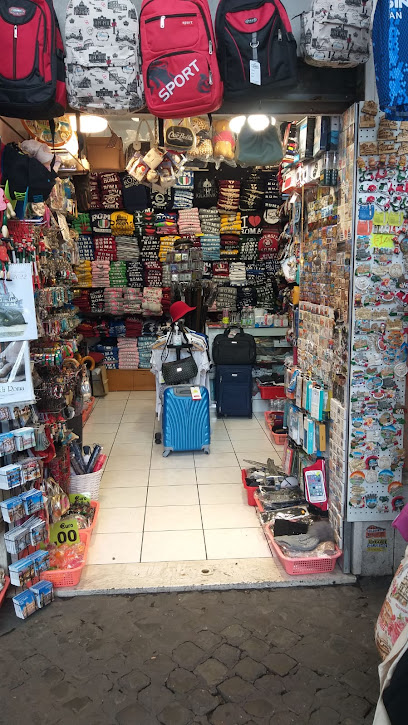
Trastevere Store
Explore Trastevere Store, where Roman style meets contemporary fashion in the heart of Trastevere, Rome's most charming neighborhood.

Essential bars & hidden hideouts
Bar San Calisto | Roma
Experience the authentic Roman atmosphere at Bar San Calisto, a local favorite in Trastevere offering affordable drinks and a vibrant ambiance.

FRENI E FRIZIONI
Experience Rome's vibrant nightlife at Freni e Frizioni, a cocktail bar known for its creative drinks and lively atmosphere.

Ma Che Siete Venuti A Fà
Experience the vibrant atmosphere and diverse beer selection at Ma Che Siete Venuti A Fà, one of Rome's top beer halls and pubs.

Bar Meccanismo
Discover Bar Meccanismo: where traditional Italian café culture meets the vibrant nightlife of Rome, in the heart of Trastevere.

Mr. Brown Pub
Discover the heart of Roman nightlife at Mr. Brown Pub, where tradition meets a relaxed pub atmosphere in the Eternal City.

404 Name Not Found
Experience the vibrant cocktail culture at 404 Name Not Found Cocktail Bar, a stylish gem in the heart of Rome, perfect for unwinding and socializing.

Caffé del Cinque
Discover the charm of Caffé del Cinque, a cozy bar in Rome offering exquisite wines and authentic Italian flavors in a picturesque setting.

Essenza Wine Bar Trastevere
Discover the essence of Italian wine and cuisine at Essenza Wine Bar in the heart of Trastevere, Rome's charming district.

The Hole Trastevere
Experience the vibrant nightlife of Rome at The Hole Trastevere, where innovative cocktails and a lively atmosphere await.

Almalu Trastevere
Discover the lively spirit of Almalu Trastevere, where creative cocktails and a vibrant atmosphere create unforgettable evenings in the heart of Rome.
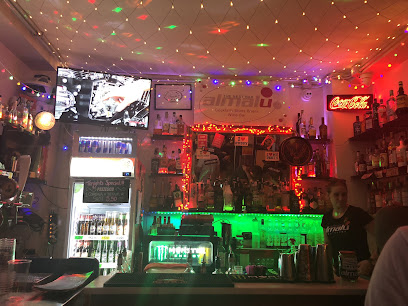
Local Phrases
-
- HelloCiao
[chow] - GoodbyeArrivederci
[ah-ree-veh-der-chee] - YesSì
[see] - NoNo
[noh] - Please/You're welcomePer favore/Prego
[pair fah-voh-reh/preh-goh] - Thank youGrazie
[grah-tsee-eh] - Excuse me/SorryScusa/Mi dispiace
[skoo-sah/mee dee-spyah-cheh] - How are you?Come stai?
[koh-meh stah-ee?] - Fine. And you?Bene. E tu?
[beh-neh. eh too?] - Do you speak English?Parli inglese?
[pahr-lee een-gleh-zeh?] - I don't understandNon capisco
[non kah-pee-skoh]
- HelloCiao
-
- I'd like to see the menu, pleaseVorrei vedere il menù, per favore
[vor-ray veh-deh-reh eel meh-noo, pair fah-voh-reh] - I don't eat meatNon mangio carne
[non mahn-joh kahr-neh] - Cheers!Salute!
[sah-loo-teh] - I would like to pay, pleaseVorrei pagare, per favore
[vor-ray pah-gah-reh, pair fah-voh-reh]
- I'd like to see the menu, pleaseVorrei vedere il menù, per favore
-
- Help!Aiuto!
[ah-yoo-toh!] - Go away!Vai via!
[vah-ee vee-ah!] - Call the Police!Chiama la Polizia!
[kee-ah-mah lah poh-lee-tsyah!] - Call a doctor!Chiama un dottore!
[kee-ah-mah oon doh-toh-reh!] - I'm lostSono perso
[soh-noh pehr-soh] - I'm illSono malato
[soh-noh mah-lah-toh]
- Help!Aiuto!
-
- I'd like to buy...Vorrei comprare...
[vor-ray kohm-prah-reh...] - I'm just lookingSto solo guardando
[stoh soh-loh guar-dahn-doh] - How much is it?Quanto costa?
[kwahn-toh koh-stah?] - That's too expensiveÈ troppo caro
[eh trohp-poh kah-roh] - Can you lower the price?Puoi abbassare il prezzo?
[pwah-ee ahb-bahs-sah-reh eel preh-tsoh?]
- I'd like to buy...Vorrei comprare...
-
- What time is it?Che ora è?
[keh oh-rah eh?] - It's one o'clockÈ l'una
[eh loo-nah] - Half past (10)Sono le dieci e mezza
[soh-noh leh dee-eh-chee eh meht-sah] - MorningMattina
[maht-tee-nah] - AfternoonPomeriggio
[poh-meh-ree-joh] - EveningSera
[seh-rah] - YesterdayIeri
[yeh-ree] - TodayOggi
[oh-jee] - TomorrowDomani
[doh-mah-nee] - 1Uno
[oo-noh] - 2Due
[doo-eh] - 3Tre
[treh] - 4Quattro
[kwah-troh] - 5Cinque
[cheen-kweh] - 6Sei
[say] - 7Sette
[seht-teh] - 8Otto
[oh-toh] - 9Nove
[noh-veh] - 10Dieci
[dee-eh-chee]
- What time is it?Che ora è?
-
- Where's a/the...?Dov'è...?
[doh-veh...?] - What's the address?Qual è l'indirizzo?
[kwahl eh leen-dee-reet-soh?] - Can you show me (on the map)?Puoi mostrarmi (sulla mappa)?
[pwah-ee mohs-tahr-mee (sool-lah mahp-pah)?] - When's the next (bus)?Quando passa il prossimo (autobus)?
[kwahn-doh pahs-sah eel prohs-see-moh (ow-toh-boo-s)?] - A ticket (to ....)Un biglietto (per ....)
[oon bee-lyet-toh (pair ....)]
- Where's a/the...?Dov'è...?
History of Trastevere
-
Trastevere's history dates back to ancient Rome, where it was originally inhabited by the Etruscans and later became a part of the Roman Empire. The name 'Trastevere' derives from the Latin 'Trans Tiberim', meaning 'across the Tiber', highlighting its location on the west bank of the river. This area was initially viewed as a suburban region, home to artisans and laborers.
-
During the 4th century, Trastevere became an important center for early Christianity. The Basilica di Santa Maria in Trastevere, one of the oldest churches in Rome, was established around this time. The neighborhood flourished throughout the Middle Ages, becoming a hub for pilgrims and religious gatherings, which fostered a unique blend of local culture and spirituality.
-
The Renaissance period saw Trastevere evolve into a vibrant cultural area. The construction of palaces and villas by wealthy families, including the Farnese family, transformed the neighborhood's aesthetic. Artists such as Raphael and Michelangelo were influenced by the local culture, contributing to the area's artistic legacy. The region became known for its lively streets and vibrant markets.
-
In the 19th century, with the unification of Italy, Trastevere underwent significant urban development. The neighborhood retained its lively character but began to modernize with new infrastructure. The establishment of public transport and the introduction of new residential buildings changed the demographic landscape, attracting a mix of social classes.
-
The 20th century marked a cultural renaissance in Trastevere, with the establishment of various cultural institutions, theaters, and art galleries. The area became a haven for artists, intellectuals, and bohemians. The vibrant nightlife, with its bustling bars and restaurants, solidified Trastevere's reputation as a cultural hotspot in Rome, celebrating both traditional Roman culture and contemporary influences.
Trastevere Essentials
-
Trastevere is easily accessible from various neighborhoods in Rome. From the city center, you can take tram number 8 from Piazza Venezia, which will take you directly to Trastevere Station. Alternatively, buses such as the 44 and 75 connect Trastevere with other areas. If you are coming from the Vatican, the easiest option is to walk across the Tiber River via the Ponte Sisto. For those arriving by train, the Trastevere train station is well-connected to major Italian cities.
-
Trastevere is a pedestrian-friendly neighborhood, and many of its charming streets are best explored on foot. Public transport options include buses and trams, with stops conveniently located throughout the area. Bicycles can also be rented from local shops or bike-sharing services for a leisurely ride along the Tiber. Additionally, taxis and rideshare services are available if you need to travel further afield.
-
Trastevere is generally a safe neighborhood for tourists. However, it is advisable to remain vigilant, especially in crowded areas or during nighttime. Pickpocketing can occur in busy spots, such as near popular tourist attractions and on public transport. Areas to be cautious of include dark alleys and less frequented streets after dark. Always keep your belongings secure and be aware of your surroundings.
-
In case of an emergency, dial 112 for police, fire, or medical assistance. The nearest hospital is the Ospedale Santo Spirito, located in the vicinity. It is advisable to have travel insurance that covers emergencies. For minor health issues, local pharmacies are easily accessible and often have English-speaking staff.
-
Fashion: Do wear comfortable shoes for walking, as the cobblestone streets can be uneven. Don't wear overly revealing clothing, especially when visiting churches. Religion: Do respect local customs, including covering shoulders and knees when entering churches. Public Transport: Do validate your ticket before boarding. Don't eat or drink on public transport. Greetings: Do greet locals with a friendly 'Buongiorno' (Good morning) or 'Buonasera' (Good evening). Eating & Drinking: Do try local dishes like 'Cacio e Pepe' and 'Supplì.' Don't rush your meals; Italians enjoy long, leisurely dinners.
-
To experience Trastevere like a local, visit the neighborhood's vibrant markets, such as the Mercato di Porta Portese on Sundays for antiques and vintage finds. Engage with locals at traditional osterias for authentic Roman meals. Don't miss the chance to attend a local festival or event, as Trastevere is known for its lively cultural scene. For a unique view of the city, head to the Gianicolo Hill, just a short walk away, especially at sunset.
Trending Landmarks in Trastevere
Nearby Cities to Trastevere
-
Things To Do in St. Peter's Square
-
Things To Do in Vatican Necropolis
-
Things To Do in St. Peter's Basilica
-
Things To Do in Apostolic Palace
-
Things To Do in Sistine Chapel
-
Things To Do in Vatican Gardens
-
Things To Do in Gregorian Etruscan Museum
-
Things To Do in Vatican Pinacoteca
-
Things To Do in Vatican Museums
-
Things To Do in Orvieto
-
Things To Do in Assisi
-
Things To Do in Perugia
-
Things To Do in Montepulciano
-
Things To Do in Arezzo
-
Things To Do in Siena













